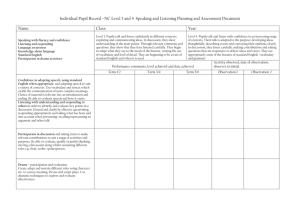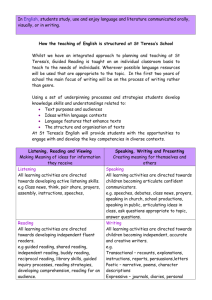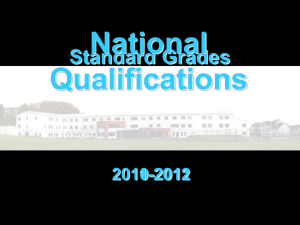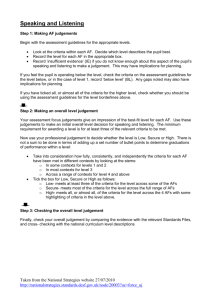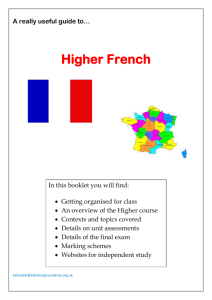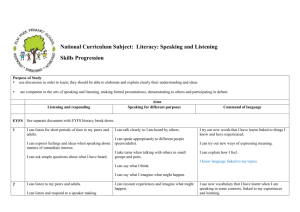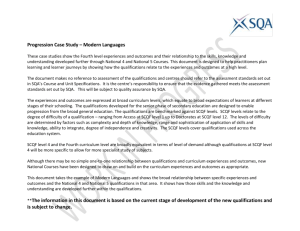Higher French
advertisement
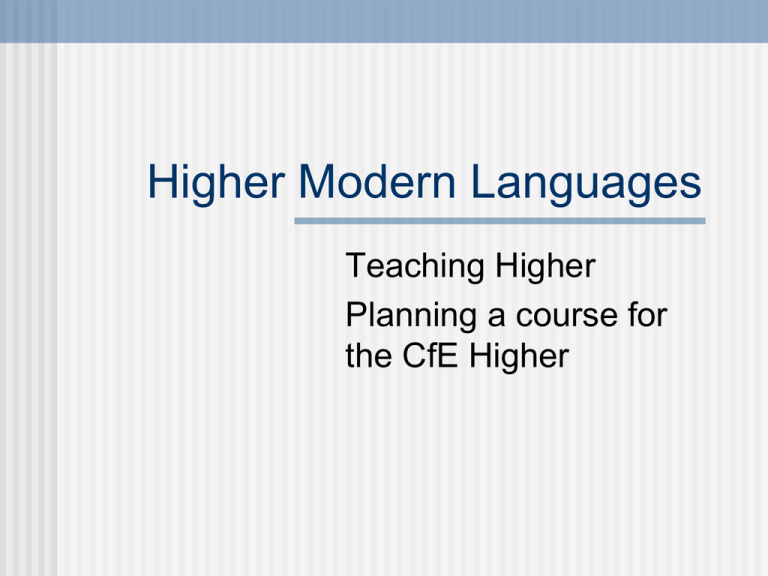
Higher Modern Languages Teaching Higher Planning a course for the CfE Higher The CfE Higher National 5 qualifications are the only option in 2014/15 New Higher qualifications in 2014/15 are expected to be the norm for National 5 pupils Revised qualifications at level 6 (Higher); 'dual run' with existing Higher The main changes NABs to Unit assessment Themes and Contexts Reading and Translation Listening Opinion Writing Talking Directed Writing The contexts Society Becoming an adult/new family structure/ marriage/partnership/gang culture/bullying/social influences and pressures Teenage problems eg smoking, drugs, alcohol Impact of the digital age Global languages Minority languages and their importance/association with culture Citizenship Global citizenship/democracy/politics/power The contexts Learning Learning in context Understanding self as a learner, eg learning styles/importance of language learning Advantages/disadvantages of higher or further education, choosing a university/college, lifelong learning The contexts Employability Jobs Getting a summer job, planning for future jobs/ higher education, gap year, career path, equality in the workplace Work and CVs Preparing for a job interview/importance of language in global contexts, job opportunities The contexts Culture Taking a gap year, Working abroad (mobility), Travel Living in a multicultural society/stereotypes/ prejudice and racism Social influences on/importance of traditions, customs and beliefs in another country Literature — analysis and evaluation Studying the media of another country Elements of the course • Using and Understanding Language • Reading • Translation • Opinion writing • Listening • Personal opinion writing • Presentation • Discussion Reading 20% 600 words, 50 minutes Reading skills Dictionary use Highlighting Use of questions, including line prompts Overall understanding question Translation 10% 40 words, 10 minutes Timing Dictionary Verbs and tenses Checking off Sense check Directed writing 10% Timing 120-150 words, 40 minutes 2 choices: teaching how to decide Four bullet points, equal weight Opinions will matter Future or conditional needed for one bullet point Success criteria Language structures: tenses Proof reading Listening 20%: same structure as National 5 Monologue then Dialogue: 2 minutes each answers important Note taking Dictionary use Use of questions Opinion writing 10% 120-150 words, 40 minutes? Success criteria Normally three questions Read the questions! Opinions Language structures Proof reading Presentation 10% 2-300 words, two minutes Very closely linked to opinion writing Use success criteria with learners Encourage learning styles Use structure and bullet points Discussion Encourage planning in presentation Look at the five marks at National 5 Plan soundbites Plan longer answers Clearly defined as a conversation Use complex sentences Refer to the grammar guide Preparing for Unit and external assessment Timings Formats Reading, listening, writing, talking Passing/failing Prelims and estimates Developing assessments through the year, tracking and monitoring progress Setting levels using pre-assessment and grade criteria Monitoring/tracking Pupil profiles/personal learning planning Using information to support and drive learning Unit assessments Four skills Combine assessments when you can Link listening and talking Link external talking with preparation Link external talking with writing Use prelims as evidence What support is there? Course and Unit Support Notes Unit assessments SQA and Education Scotland Support Practice papers for French SQA meetings Scholar How to Pass/Bright Red/Leckie Using Scholar Different levels Listening Revision Monitoring and tracking Formalisation of use Differentiation
